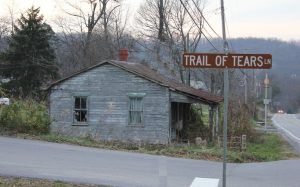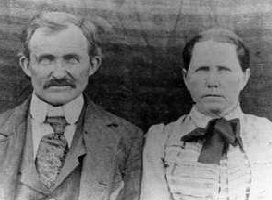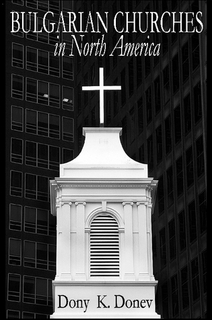10 Things to Considering When Attempting to Express Cultural Sensitivity
- Be informed about the cultural differences of the people you are trying to reach because your good intentions may be misunderstood and even offend.
- Keep in mind you are not going on a site-seeing tour nor are you going to see a tourist attraction.
- Just because something makes sense in your language doesn’t mean it will make sense interpreted into a foreign language. Clichés are to be avoided.
- “One man’s meat is another man’s poison”
- “There are two ways to skin a cat”
- Consider that the people you are ministering to are not objects to be put on display in a savvy PowerPoint when returning home from your trip.
- Respect their right to privacy
- Ask permission to take pictures
- Just because you going or have been to a foreign country doesn’t make you a missionary. Don’t let one trip abroad make you forget who you are or make you arrogant.
- It is when you put yourself in the shoes of the people you are helping that you learn some do not even have shoes to wear. But this does not mean you are better than others.
- Aid is not the answer to all problems. Sometimes the people you are going to assist have real problems and spiritual needs. Socks don’t save souls.
- Aid should be given freely without any strings attached
- Don’t make them feel less by giving scraps
- Don’t make them feel like beggars
- It is not the power of earthly money that saves souls, but the power of a Heavenly Father.
- No amount of money will buy a soul
- Raised funds will not make you a missionary
- Being the missionary of the one-way ticket is a true test of your commitment towards the Kingdom
- There is a major difference between being “mission-minded” and being an international worker.
- The people you are ministering to are real human beings with dignity.
- Treat all with respect
- Don’t assume they know less than you or have less than you
The Old Federal Road and the Cherokee Trail of Tears
 The Old Federal Road: Researched & composed by Allen Parke Swayne & James Parke Swayne
The Old Federal Road: Researched & composed by Allen Parke Swayne & James Parke Swayne
During the westward expansion of the original colonies, both north and south of the Cherokee Nation, there was great need for a mail route to link the expanding settlements. Since the Cherokee Nation occupied the area from the mountains of North Carolina westward to Red Boiling Springs in middle Tennessee, the United States settlements in Georgia could not communicate with anyone living in Virginia. The idea of negotiating with the Cherokee for a mail route from Knoxville to Augusta, Georgia may have started as early as 1792 when George Washington began his second term as president.
The route was obtained in 1806 with the agreement that the U.S. Government would pay the Cherokee $1,600.00 and was known by The Tellico Treaty. The route was laid out by a party of Indians and whites and it ran from Niles Ferry on the Little Tennessee River, southward into Georgia. The area went through the land occupied by the Cherokee Nation and the route took advantage of favorable terrain for travelers.
The actual construction of the Old Federal Road was apparently done by the Indians who also ran the ferries crossing the Hiwassee and Ocoee Rivers. The excellent choice of right-of-way is impressive from an engineering standpoint. From Niles Ferry to Conasauga it does not deviate as much as one-half mile from a straight line. It follows low-shale ridges in most places and it following creeks and swampy areas.
Starting from the very old Niles Ferry Crossing of the Little Tennessee River, near the present U.S. Highway 411 bridge, the road went in an almost straight line to a point about two miles east of the present town of Madisonville. Here in 1828, the newly created Monroe County erected its first courthouse on what is now the Ross Jewell farm. It was a two-story log building with the jail on the top floor.
The road continued southward past the present site of Coltharp School, intersected Tennessee Highway #68 for a short distance and passed the site of Nonaberg Church. East of Englewood, it continued on the east side of McMinn Central High School and crossed Highway #411 near the railroad overpass. Apparently, when the railroad was built, a road just on the east side of the tracks leading into Etowah was called the Old Federal Road. This has caused some confusion as to location but it is well established that the original road came near Old Williamsburg and ran through the Doug Tullock property. By keeping on this route, it missed the low ground and swampy conditions that were typical of the Etowah area and its vicinity.
Keeping on the higher ground along the west side of Etowah, the road continued near Cog Hill and the Hiwassee Riber, near the mouth of Conasauga Creek. It may have passed through the town of Columbus, but it is more likely that the ferry was farther downstream. Columbus was the first county seat of Polk County and at one time it had a hotel, two stores and two churches. The little town faded out of existence after the Ocoee Purchase of 1835, when Benton was chosen for the county seat. The last empty building was used in 1860 by the U.S. Army to build a pontoon bridge across the Hiwassee River so that troops could be moved toward Chattanooga.
Three grave sites remain on the hill overlooking the old town site of Columbus. They are of Col. Henry Bradford, 1776/1871 and his wife Rachel Farland Bradford and Stanwix Hord, son of Col. Hord. These graves sites are easily found in this area, although they were untended for years and were in a deplorable condition until restored and fenced in 1995.
About a mile up Conasauga Creek from its mouth is the site of the Hildebrand Mill. It was built about 1807 by the U.S. Government for the Cherokee Indians. John Hildebrand was of German descent and was manager of the first hotel in Knoxville when he was hired to build a grist mill for the Indians at a mutually satisfactory site. The site on Conasauga Creek was selected and the mill was constructed. Hildebrand married a Cherokee woman and raised his family in Polk County.
From the ferry on the Hiwassee River the road ran through the site of the present Benton courthouse. It followed the site of the Welcome Valley Road for some distance and then crossed the Ocoee River at the Hildebrand Landing. One of the Hildebrands built a fine house on the south side of the Ocoee River. This dwelling still exists although it has been moved a short distance. It was owned by Mr. & Mrs. Willis Trew but has been deeded to the Polk County Historical Society upon the death of the present occupant.
From Hildebrand Landing the road ran south and crossed U.S. Highway #64 at a point where there is now a Church of God. Continuing south near Old Fort, it crossed U.S. Highway #411 and came to the Conasauga River at McNair Landing. The McNairs were part Cherokee and were moved out on the Trail of Tears in 1838. The McNair gravesite was still in existence in 1950.
Since the Hildebrand Landing on the Tennessee-Mississippi Rivers system the Old Federal Road was used as a portage route to cut off over a thousand miles of travel from the water route to Mobile Bay. Heavy carts pulled by oxen moved boats from Hildebrand to McNair. One cargo boat was reported to carry one hundred barrels of flour and whiskey, but the proportion of each was not given. A proposal to build a canal to replace the portage was found to be not feasible.
Near the south end of the village of Tennga, Georgia is an historic marker alongside of Highway #411 which states the Old Federal Road was close to its path for the next twenty-five miles southward.
Besides the developments already mentioned, there were several other historic sites that were built near the Old Federal Road. A few of these are as follows:
- Vastine Stickley House in Madisonville
- Cantrell Grave near Etowah
- Nonaburg Church near Englewood
- Etowah Depot
- Cog Hill Seminary near Etowah
- Trew’ Store near Etowah
- Old Fort blockhouse in Benton
- Carlock Academy near Etowah
- Methodist Campground near Etowah
- Williamsburg near Etowah
- Half Moon Sotre in Monroe County
- Ho Store in Monroe County
- Sequoyah Birthplace museum near Vonore
- Hildebrand landing to McNair Landing, portage route in Polk County
As we have traced the history and route of the Old Federal Road, it has been found to be one of the most important sites which aided in the historical development of the States of Georgia and Eastern Tennessee. Please make some allowances for the hand-drawn path on the map above. It does deviate a small amount from the actual path.
- Coltharp School and Coltharp Community so called after the Coltharp family…many of which still reside in the area.
- Nonaberg Church still active.
- The Hildabrand lineage is well documented by several people…all of altering heritages, African-American, White & Cherokee. For more information please email [email protected] This family had marriages within the Mayfield, Starr & several other families in the area.
- The Church of God spoken of is “Ocoee Church of God”.
- The Old Fort Blockhouse spoken of originally stood approximately 1 mile north of McNairs Ferry. In the mid 1950’s the building was moved from its original location to its current location near the Polk County Jail in Benton, TN.
A J Tomlinson Last Long Lost Interview (1943)
Richard G. Spurling became ordained Church of God pastor on September 26, 1886
I, James M. Beaty, who started this inquiry, am the retired Academic Dean of the Church of God Theological Seminary and in the process of doing historical research about Richard Spurling (1810-1891) and his son Richard Green Spurling (1857-1935) as they related to the early history of the Church of God. I have written a chapter on Richard but not on Richard Green (R.G.). I do not know if and when it might be published, and do not pretend that it has no mistakes. I would appreciate any feedback and corrections. What I am looking for is verifiable, documentable facts.
The SPURLIN FAMILY – Richard Greene Spurlin, Sr,, was born NC -1810 to James and Frances Hicks Spurlin. He married Nancy Jane  Norman in Anderson County, TN, Jan. 7,1832. Marriage performed by J. Frost, M.O. Nancy was born 4/18/1815 and died 6/10/1878.
Norman in Anderson County, TN, Jan. 7,1832. Marriage performed by J. Frost, M.O. Nancy was born 4/18/1815 and died 6/10/1878.
Richard was living in his parents’ home in Fentress Co. when the 1830 Census was taken. In 1840 – Rev. Richard Sprnlin received Entry 840 – on the waters of Clear Fork in Fentress County.On March 8,1841, he purchased from Arthur Edwards, for the sum of $160, 640 acres on the north side of Clear Fork of the Cumberland River. Richard and Nancy lived on these proper-ties, near his parents and his brother Daniel until around 1847, when they moved their young family to Morgan County, and took his aged parents to live with them.
During this time their family had grown considerably. They had James J., Ann Emmaline, Nathaniel Anderson, Daniel Eli Love, William A., and baby Elizabeth. While living in Morgan County, they became the parents of Hiram, Nancy and Richard Greene, Jr. By 1860, Richard and Nancy had moved to Monroe County, TN.
Richard, Nancy, James, James J. and Frances Spurlin and Annie “Pittman (Richard’s dau.) were “charter” members of the Clear Creek United Baptist Church of Christ of Morgan Co. which was constituted the 29th of Aug., 1852. Richard, after preaching for over 40 years, was greatly dissatisfied with his church. After two years of study and prayer. a meeting was called at the Barney Meetinghouse in Monroe County, TN. After prayer, a sermon was delivered by Richard G. Spurlin. Sr. emphasizing the need of a reformation. His arguments were very forceful and effective, and were approved by his hearers as was proven when the time arrived for action. The church chose Richard as its pastor and he was ordained the following month – 1886. The “Clinton (TN) Gazette” – 1891: Died – Richard Spurlin, a minister of the gospel from Monroe County, died last Friday. He was 81 years old.” He is buried in the Eleazer Cemetery in Madisonville, TN. Also member of Holly Springs Church.
Richard and Nancy’s children & spouses: James J. married Jerusha Pittman – Morgan Co.; Ann Emmaline married Reason Pittman, Mor-gan Co.; Nathaniel Anderson married 1) Mary Wallace – Monroe Co.; 2) Sarah C. Scott -Morgan Co.; 3) Rebecca Childress – Knox Co.; Daniel Eli Love married Mary DeHart; William A. mar. 1) Nancy Black (Monroe Co TN – 9/14/1861), 2) Nancy Scott (a sister to Sarah C. Scott); Elizabeth married ?; Hiram C. married 1) Mary Waldrop, 2) Jane Guffey; Nancy mar. ? Walls; and Richard Greene, Jr. married Barbara Hamby.
The Spurlin men traditionally ran lumber mills and grist mills. Records have been found indicating this from the earliest Spulins of proven ancestry – John, of Orange County, NC. right down the line. Richard, Sr cut 32 sets of grist mill wheels during his lifetime At least 3 sets can be found today. There is a beautiful white Methodist Church building in the Turtletown, TN area that Richard, Sr., and Richard, Jr., sawed the lumber for and constructed.
From the (Original) Church of God
After having taken plenty of time for consideration, the time and place for the meeting was arranged and announced. That day is worthy of remembrance: Thursday, August 19, 1886. The small company of humble, faithful, conscientious pilgrims met at the Barney Creek Meeting House, Monroe County, Tennessee. After prayer, a strong discourse was delivered by the Rev. Richard G. Spurling, emphasizing the need of a reformation. The arguments were full of force and proved effective, and were endorsed by the hearers so that when the time came for action there was free and earnest response. The propositions and obligations were simple. We give it below: “As many Christians as are here present that are desirous to be free from all men-made creeds and traditions, and are willing to take the New Testament, or law of Christ for your only rule of faith and practice; giving each other equal rights and privileges to read and interpret for yourselves as your conscience may direct, and are willing to set together as The Church of God to transact business as the same, come forward.” In response to this proposition eleven persons, whose names are given below, presented themselves and gave to each other the right hands of fellowship: Elder Richard Spurling, his son, R. G. Spurling, Susan Mitchell, Elizabeth Hamby, John Plemons, Sr., Polly Plemons, Barbara Spurling, Margaret Lauftus, Barbara Plemons, John Plemons, Jr., Adeline Lauftus, and two others, names not given. Then they decided to receive persons into membership who possessed a good Christian character, and that ordained and licensed ministers from other churches could retain their same position or office without being re-ordained. By virtue of the office he had held as a faithful ordained minister in the Missionary Baptist Church for a number of years, Elder Richard Spurling was duly acknowledged and recognized as their minister, to do all the business devolved on him as such in the new order. He then having been placed in authority by the body, took his seat as Moderator, and by prayer dedicated the infant church to God, imploring His guidance and blessings for it, and that it might grow and prosper, and accomplish great good. An invitation was then given for the reception of members, and they received Richard G. Spurling, who was then a Licensed Minister. The church chose him as their pastor, and had him ordained the next month, September 26, 1886.
The Unrealized Spiritual Harvest of Bulgarian Churches in North America
 ….A closer examination of the ministry and structure of the network of Bulgarian churches in North America will give answers to essential issues of cross-cultural evangelism and ministry for the Church of God. Unfortunately, until now very little has proven effective in exploring, pursuing and implementing cross-cultural paradigms within the ministry opportunities in communities formed by immigrants from post-Communist countries. As a result, these communities have remained untouched by the eldership and resources available within the Church of God denomination. There are presently no leaders trained by the Church of God for the needs of these migrant communities. Thus, a great urban harvest in large metropolises, where the Church of God has not been historically present in a strong way, remains ungathered. Although, through these communities, the Church of God has the unique opportunity to experience the post-Communist revival from Eastern Europe in a local Western setting… (p.84, Chapter III: Contextual Assessment, Historical Background, Structural Analyses and Demographics of Immigration in a Paradigm for Cross-Cultural Ministries among Migrant and Disfranchised Ethnic Groups in America Today) Read complete paper (PDF)
….A closer examination of the ministry and structure of the network of Bulgarian churches in North America will give answers to essential issues of cross-cultural evangelism and ministry for the Church of God. Unfortunately, until now very little has proven effective in exploring, pursuing and implementing cross-cultural paradigms within the ministry opportunities in communities formed by immigrants from post-Communist countries. As a result, these communities have remained untouched by the eldership and resources available within the Church of God denomination. There are presently no leaders trained by the Church of God for the needs of these migrant communities. Thus, a great urban harvest in large metropolises, where the Church of God has not been historically present in a strong way, remains ungathered. Although, through these communities, the Church of God has the unique opportunity to experience the post-Communist revival from Eastern Europe in a local Western setting… (p.84, Chapter III: Contextual Assessment, Historical Background, Structural Analyses and Demographics of Immigration in a Paradigm for Cross-Cultural Ministries among Migrant and Disfranchised Ethnic Groups in America Today) Read complete paper (PDF)
How to Start a Bulgarian Church in America from A-to-Z
Sanctuary Gateway Cities for Eastern European Slavic and Bulgarian Immigrant Churches in North America
 Since 1994 Cup & Cross Ministries International has assisted churches across the United States and has strategically planned and developed a process which incorporates Bulgarian Evangelical Churches in North America. The first success of this endeavor was the establishment of the Bulgarian Evangelical Church of God in Chicago in 1995.
Since 1994 Cup & Cross Ministries International has assisted churches across the United States and has strategically planned and developed a process which incorporates Bulgarian Evangelical Churches in North America. The first success of this endeavor was the establishment of the Bulgarian Evangelical Church of God in Chicago in 1995.
The Bulgarian Church of God in Chicago followed a rich century-long tradition, which began with the establishing of Bulgarian churches and missions in 1907. (read the history) Consecutively, our 1995 Church Starting Paradigm was successfully used in various studies and models in 2003. The program was continuously improved in the following decade, proposing an effective model for leading and managing growing Bulgarian churches.
Based on the Gateway cities in North America and their relations to the Bulgarian communities across the continent, it proposed a prognosis toward establishing Bulgarian churches (see it here) and outlined the perimeters of their processes and dynamics in the near future (read in detail). Since 1995 twelve more Bulgarian churches have been started in strategic immigration gateways across the United States and Canada. For the past four years our team have been involved in the process of establishing Bulgarian congregations in Atlanta, Phoenix and San Francisco. Read complete paper (PDF)
Toward Context of Ministry Applications
In the beginning of the 21st century the Protestant Church in Bulgaria is entering a new constitutional era in the history of the country. Since the fall of the Berlin Wall, the political and economic challenges in Eastern Europe have strongly affected the Evangelical Churches. More than ever before, they are in need of reformation in doctrines and praxes in order to adjust to a style of worship liberated from the dictatorship of the communist regime. In order to guarantee the religious freedom for our young, democratic society, the Protestant Movement in Bulgaria needs a more dynamic representation. Such can be provided only by people who will create a balance between the old atheistic structures and the new contemporary, nontraditional style of ministry.
Similar is the case among Bulgarian Evangelical Churches in North America which also share analogue dynamics with congregations of Latin American immigrants. Several facts are obvious from such comparison. It is apparent that Bulgarian immigrants come to North America in ways similar as other immigrant groups. Large cities which are gateways for immigrants are probable to become a settlement for Bulgarian immigrants due to the availability of jobs, affordable lodging and other immigrants from the same ethnic group.
The emerging Bulgarian immigrant communities share religious similarities and belongingness which are factors helping to form the communities. As a result of this formation process, the Bulgarian Evangelical Churches in North America emerge. It also seems natural to suggest that as this process continues, Bulgarian Evangelical Churches will be formed in other gateway cities and other large cities which meet the requirements to become a gateway city. Such has been the case with Latin American churches. If this is true, it should be proposed that the Bulgarian Churches in North America follow a strategy for church planting and growth which targets these types of cities.
It is encouraging, at the same time, to observer that one of the positive estimates provided by our doctoral project is also coming to reality. In 2002-2004, based on analyses provided by the New Religious Immigrants Project, our research suggested that the next Bulgarian Evangelical Church will be established in the last of the Seven American Gateway Cities which was still without a Bulgarian Church, namely the city of San Francisco. Our resent visit in the area of the Bay Area showed that this prediction is already progressing into a reality as the Bulgarian Diaspora there is already producing a Bible study group out of uniting Bulgarian college students from Barkley and young computer professionals in the area.
Geographical Location of Bulgarian American Churches and Gateway Cities.
Currently, Bulgarian Evangelical Churches are located in cities which have a high concentration of foreign-born immigrants. Such cities are called gateway cities, a large immigrant point-of-entry city to the United States. Immigrants typically enter the United States through one of these cities and settle there. Such cities contain over half of the foreign-born population in the United States. There are Bulgarian Evangelical Churches active in six of the seven gateway cities as follows:
Bulgarian Evangelical Churches in Gateway Cities
| Gateway City | Foreign Born | Percent of Foreign Born | Bulgarian Church |
| 1. New York, NY | 3,657,269 | 18.7% | Yes |
| 2. Los Angeles, CA | 3,944,828 | 27.1% | Yes |
| 3. Houston, TX | 460,380 | 12.3% | Yes |
| 4. Washington, DC | 578,786 | 8.6% | No |
| 5. Miami, FL | 1,072,843 | 33.6% | Yes |
| 6. Chicago, IL | 914,58 | 11.1% | Yes |
| 7. San Francisco, CA | 1,250,693 | 20.0% | No |
Several facts are obvious from the above comparison. It is apparent that Bulgarian immigrants come to North America in ways similar to other immigrant groups, channeled through the listed gateway cities. Large cities which are gateways are more probable to become a settlement for Bulgarian immigrants due to the availability of jobs, lodging and other immigrants from the same ethnic group. The emerging Bulgarian immigrant communities share religious similarities and belongingness which are factors helping to form the communities. As a result of this process of formation of Bulgarian immigrant communities, the Bulgarian Evangelical Churches in North America emerge. It also seems natural to suggest that as this process continues, Bulgarian Evangelical Churches will be formed in the remaining two gateway cities (Washington, D.C. and San Francisco) and other large cities which meet the requirements to become a gateway city (for example, the city Atlanta). If this is true, it should be proposed that the Bulgarian Churches in North America follow a strategy for church planting and growth which targets this type of cities. With all this in mind, the Unrealized Spiritual Harvest of Bulgarian Churches in North America remains unforgiving in history…
Resources for Further Study:
- Seven Churches of Revelation
- How to Start a Bulgarian Church in America from A-to-Z
- Bulgarian Churches in North America: Contextual Assessment
- Bulgarian Churches in North America: Statement of Problem
The ProBible Project Renewd, Revised and Released
 Original published date: November 15, 2010
Original published date: November 15, 2010
Tag: http://ProBible.net
Cup & Cross Ministries’ web research team has just released a new internet Bible study project called ProBible.Net. ProBible integrates an extensive Biblical Greek knowledge database of the scholarly b-Greek mailing list. The new website archives in real-time panel discussions led by Greek scholars, university professors and Bible researchers and places them as commentaries to their respective Bible passages. The result is a new kind of integrative online research, which has the original languages of the Bible text discussed in dept by scholars and experts in the field. The best part is that all users can participate in the online discussions via the website or the b-Greek list. The hope of the developing team is to create a fully annotated online study Bible, which includes a commentary to all important parts of Scripture.










